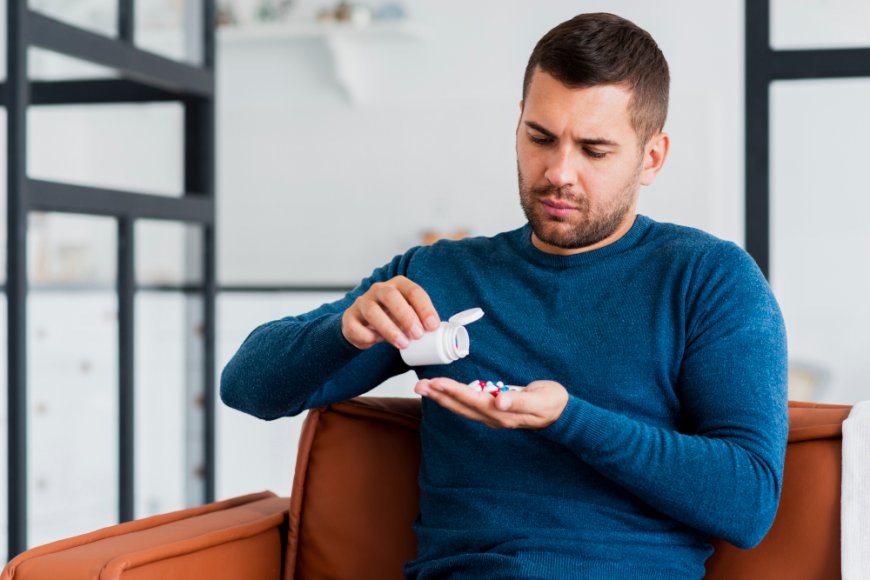EVALI (Vape‑Related Lung Injury) Updates: What You Need to Know
If you or someone you know vapes and experiences breathing difficulty, chest pain, fever, nausea, or fatigue, seek immediate medical attention and consider getting help to quit vaping. The journey to lung health begins with one decision—choosing safety over habit.

Vaping was once celebrated as a safer alternative to smoking, but over the past few years, reports have emerged of serious lung illnesses linked to e?cigarette use. The condition is known as E-cigarette or Vaping-Associated Lung Injury (EVALI). While initial outbreaks peaked in 20192020, new findings are still shaping our understanding of this condition. If you or someone you care about vapes, staying informed is crucial to making safe choices.
? What Is EVALI?
First identified in 2019, EVALI describes lung damage linked to vaping or the use of e?cigarettes. It can manifest as serious respiratory illnesses including acute respiratory distress, pneumonia-like infections, hypersensitivity pneumonitis, and even popcorn lung (bronchiolitis obliterans)
Common Symptoms:
-
Shortness of breath
-
Chest pain or tightness
-
Persistent coughing
-
Fever, chills
-
Nausea, vomiting, diarrhea
It often mimics pneumonia or viral infections, which delays proper diagnosis.
? What Causes EVALI?
Vitamin E acetate was identified early on as a key culprit, especially in THC-based cartridges. Found in most EVALI patients' lung fluid, this substance is strongly linked to lung damageHowever, other chemicals in abused vaping productsparticularly from black?market sourcesmay also cause harm
Newer studies highlight that even nicotine-containing vapes may contain toxic metals and additives. For example, disposable vapes have shown dangerously high levels of heavy metals like lead and nickel compared to traditional cigaretteswhich can further strain the lungs
? How Many Are Affected?
During the 20192020 EVALI outbreak, the U.S. recorded approximately 2,700 hospitalizations and 68 deaths The majority70%were male, with a median age of just 24 years, yet cases ranged from teenagers (as young as 13) to older adults Although new cases have declined since the initial outbreak, sporadic incidents continue to be reported
? What Do New Imaging Studies Show?
Recent imaging research sheds further light on lung damage caused by vaping:
-
CT Scans reveal ground-glass opacities, consolidations, and subpleural sparingsigns of inflammation or fluid in the lungs
-
PET and functional MRI studies demonstrate abnormal lung perfusion and ventilationeven among asymptomatic e?cigarette users
These findings highlight that vaping can silently damage lungseven before symptoms appear.
? Medical Management of EVALI
Theres no single test for EVALI; diagnosis requires ruling out infections and confirming recent vaping exposure (within 90 days)
Treatment typically includes:
-
Hospital admission, often for oxygen support.
-
Corticosteroids to reduce lung inflammation.
-
Antibiotics/antivirals to rule out infection.
-
Ventilation support or ICU care for severe cases
Recovery:
-
Some patients show improvement within days, while full recovery may take weeks.
-
Long-term follow-up with lung specialists is vital to monitor lasting damage
? Whos at Risk?
The most affected demographics include:
-
Youth and young adults
-
Users of illicit THC cartridges
-
Individuals using products with vitamin E acetate
-
Users of possibly contaminated or disposable vaping products
? Ongoing Fresh Concerns
Recent reports show that disposable, flavored vapesespecially popular among youthcan contain high metal concentrations, even more than cigarettes, raising concerns for both cancer and lung injury
Despite the main outbreak being linked to vitamin E acetate, ongoing vigilance is necessary. The chemicals in e-liquids and device components continue to evolve and may carry unknown risks.
? Prevention Strategies
To reduce EVALI risk, health experts recommend:
-
Avoid illicit THC vapes or any unregulated cartridges.
-
Stick to regulated products with clear labeling.
-
Discard disposable vapes, which may leak harmful metals
-
Quit vaping altogetherespecially if you experience ringing lungs, coughing, or chest pain.
-
Seek medical attention promptly if respiratory symptoms develop.
? The Role of Cessation Support
Quitting vaping can be difficultespecially for young people. Thats where institutions like Nasha Mukti Kendra in Amritsar become invaluable. They offer professional guidance, counseling, medical support, and behavior therapy tailored to nicotine or vaping addiction.
Many also provide:
-
Detox programs
-
Peer and family therapy
-
Life skills and aftercareespecially important in preventing relapse
Including EVALI awareness in anti-addiction education helps reinforce why cessationnot switching to another deviceis often the safest choice.
? Bottom Line
-
EVALI remains a serious, potentially life-threatening condition linked to vapingespecially THC- or vitamin E acetate-laced products.
-
Lung damage isn't always obvious, and may require imaging to detect.
-
Vaping isn't risk-freerecent evidence points to harmful metals and chemicals even in nicotine-only vapes .
-
Early medical attention saves lives, and complete cessation is the safest route.
-
For those struggling with addiction, support is availablefrom digital tools to trusted rehab centers like Nasha Mukti Kendra in Amritsar.
If you or someone you know vapes and experiences breathing difficulty, chest pain, fever, nausea, or fatigue, seek immediate medical attention and consider getting help to quit vaping. The journey to lung health begins with one decisionchoosing safety over habit.

























